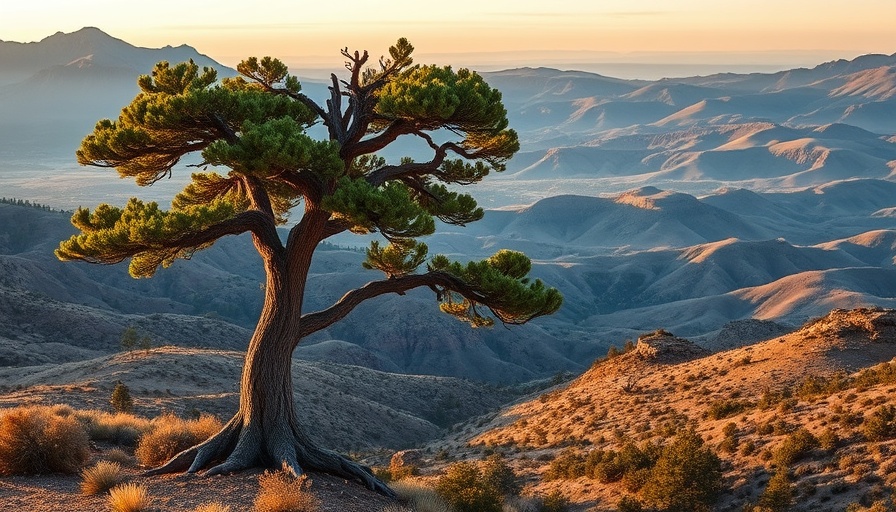
Discovering Colorado's Evergreen Treasures
When it comes to the picturesque scenery of Colorado, few sights capture the essence of the Rockies quite like the majestic evergreen trees. These resilient trees, known for their persistent green foliage, are a defining feature of the state’s stunning landscapes. Understandably, Colorado boasts a rich diversity of native evergreen species that play a vital role in the ecosystem.
What Makes Evergreens So Unique?
At the heart of these evergreen wonders is their ability to thrive in diverse environments, from the arid mountains to cooler high-altitude regions. Classified scientifically under the group of gymnosperms called Pinophyta, these trees and shrubs exhibit fascinating adaptations that enable them to survive long winters and dry conditions. Evergreens are not just trees; they encompass essential shrubs as well, forming a crucial part of Colorado's biodiversity.
The Heroes of the Forest: Colorado's Native Evergreens
Among Colorado's proudly native evergreens, four main types stand tall: Pines, Spruces, Firs, and Junipers. Let’s take an up-close look at a few that you might encounter on your nature walks or while exploring local parks:
Blue Spruce: A Stunning Landscape Icon
One of the most recognizable trees in Colorado, the Blue Spruce (Picea pungens), stands out not only for its striking silvery-blue color but also its impressive height, averaging between 75 to 135 feet. Ideal for both landscaping and as a Christmas tree, this evergreen’s deep roots give it resilience against strong winds, making it a great addition for those living in windy areas. Interestingly, the Blue Spruce was only discovered in 1862 in the Rockies, and it quickly gained popularity for its beauty and utility.
Bristlecone Pine: Nature's Ancient Survivor
The Bristlecone Pine (Pinus aristata) is another remarkable native tree. Known for living for thousands of years, bristlecone pines are perfect illustrations of endurance and resilience. Standing only 10 to 50 feet tall, these trees thrive in harsh mountain conditions and are celebrated not just for their longevity, but for their unique twisted forms. Those who seek out these legendary trees find both a majestic specimen and a living piece of Colorado’s history.
The Value of Colorado's Evergreens
Beyond their striking appearances, Colorado’s native evergreens contribute significantly to the local ecosystem. They provide vital habitats for various wildlife species, including birds, squirrels, and other animals. Additionally, these evergreens contribute to air quality and help stabilize soil, preventing erosion. Residents and visitors alike can appreciate the dual role of these trees as both beautiful landscapes and essential environmental allies.
Planning Your Evergreen Encounter
For those interested in exploring these natural wonders, Colorado’s state parks offer numerous trails where one can observe the beauties of the Blue Spruce and Bristlecone Pine in their natural settings. Whether you seek inspiration for your garden or simply want to enjoy nature's tranquility, these trees enrich the experience.
A Community Connection
In addition to their ecological importance, native evergreens hold cultural significance for local communities. Many Native American tribes traditionally used the Blue Spruce for medicinal purposes, creating teas for various ailments. This history enhances the tree’s legacy and can be a talking point as you share your newfound knowledge during community gatherings or hikes.
Concluding Thoughts: Embrace Nature
Exploring Colorado's native evergreens is more than just an outdoor activity; it's about connecting with the environment, appreciating local heritage, and understanding the intricate relationships that define our ecosystem. So grab your walking shoes, and consider visiting your nearest park or forest to discover the enduring beauty of these remarkable trees. Whether planting a Blue Spruce in your garden or simply taking a moment to enjoy the view of a Bristlecone Pine, each encounter offers a chance to deepen your relationship with Colorado's natural world.
 Add Row
Add Row  Add
Add 




Write A Comment